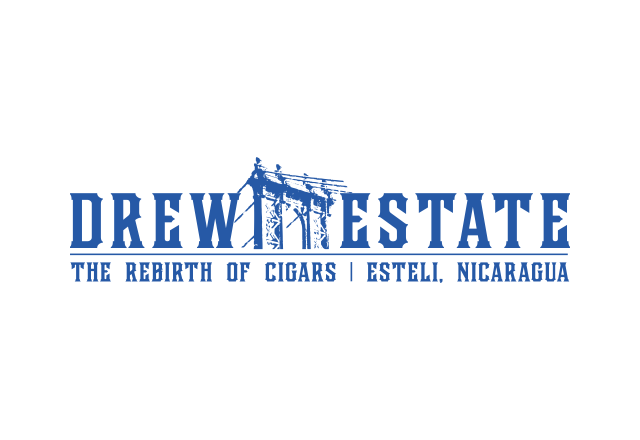At IPCPR 2012 in Orlando, Florida in August, Drew Estate introduced a new brand made by Willy Herrera, formally of El Titan de Bronze fame. Herrera joined the Drew Estate team in June of 2011 and has been working on the blend bearing his name ever since.
The press release about his arrival gives all of the details:
On June 15th, Willy Herrera, formerly the blender and master cigar maker of El Titan de Bronze, joined Drew Estate. Willy is bringing his unique cigar skills and talents to this dynamic, rapidly expanding premium cigar manufacturer. He will be responsible for creating and crafting handmade, traditional cigar blends under his own moniker within their Esteli, Nicaragua-based La Gran Fabrica Drew Estate and will report directly to Drew Estate’s executive board.
Herrera is best known for overseeing and directing daily operations and production at Little Havana’s El Titan de Bronze (ETB) located on Miami’s famed Calle Ocho for the last 6 years. Established in 1995, this family owned and operated “fabriquita” hand rolls cigars utilizing Cuban entubado techniques and manufacturers premium handmades for wholesale and retail sale. Also, ETB is the manufacturer for Miami Cigar’s new Casa Miranda brand and the reblended Padilla “8&11” to be reintroduced at this year’s IPCPR tradeshow. ETB will continue to be operated successfully as an independent factory under the watchful eye of its owner, Sandy Cobas.
“I have decided to join Drew Estate for many reasons,” says 38-year old Herrera, “first and most importantly, I’ve known Jonathan for a number of years and separate of business, we have become good friends. I have long admired his approach and innovative style and I feel that we can combine Drew Estate’s sense of style and fresh new ideas with my old school, traditional Cuban way of making cigars. Their factory is amazing and more so their production team is top flight. Plus, DE has deep inventories of exceptional tobacco and great relationships with all the top growers which will afford me the opportunity to have at-will access to amazing leaf. I am very anxious to get started and know I will be able to create fantastic cigars for consumers to enjoy.”
Jonathan Drew, Drew Estate’s Co-Founder and Master Cigar Maker, states, “What I respect most about Willy is that he’s authentic. Let me explain further. When I moved to Nicaragua to manufacture cigars in 1998, I only knew how to blend. I knew nothing about the inherent characteristics of heavy leaf, how to determine good crops from bad, how to ferment tobacco through pre-industry, or how to make the entire process functional in a factory setting. It took my young team and I many years to become what we have and we learned through the school of hard-knocks. Nothing came easy.” Drew continues, “Watching Willy make magic in his small factory in Miami was inspirational to me and a major reason why I pursued the new relationship. Willy ran his factory for over six years, including the purchasing of tobacco, curing, blending and quality control – he has earned his rank as a real manufacturer, plus he’s humble, honest, and cool as hell. He’s a real Don.”
“Our goal is to give Willy the freedom to create his own unique style of cigars within our operation,” explains Marvin Samel, DE’s Co-Founder and Executive VP. “Almost a factory within a factory, so as to allow him to succeed on his own merit. Ultimately the intent is for there to be brands that are not only ‘Willy Hererra’ (sic) by name, but are ones that are truly those of his creation and efforts, not just some marketing gimmick.”
Drew Estate CEO Steve Saka had this to say about the blend:
Unlike most companies, we have decided to take the slow and low approach to his joining our team. Basically we stuck him in Nica for over a year at a bench and gave him the key to our tobacco and said: “Create a great cigar…” We gave him no boundaries or limits. Willy then spent f’ing forever working on this first blend… drove me a little crazy, made a lot of bad blends along the way, but I think we overwhelmed him a bit – I don’t think he was prepared to have so many tobaccos to blend from, rather daunting… our man Nicholas helped nudge him a little here and there and viola! Willy created something I consider great.
It is a medium plus liga with an exceptional amount of creaminess and great balance of spice and sweet. Personally it really reminds me of the Habana Cohiba Siglos I use to smoke regularly in the mid-90s – this is my opinion and provided just to provide some sort of frame of reference. I find it to be so much like it that we created the packaging to be an homage to the classic Cuban SLB – we even pack the box with the crazy mis-stacked quarter wheel style you find in boxes of Habanas! It drives the Nicaraguans crazy – lol!
Along the journey, Willy has become a very competent handmade cigar bunchero and rolero – so over this next year you will begin to see him in stores personally handrolling his own and other blends. He is a really great guy and I strongly encourage any cigar lover to check him out when he is in a store near you. Ask him tons of questions cause he isn’t much of a speech maker, but is super to interact with and can provide alot of firsthand knowledge.Steve Saka had this to say about the date of release:
As for the release, we are still trying to work this out. For now, this will be a limited release product. We want to ensure we get the blending consistently perfect at the factory level so we do not want to rush production. We have dedicated LP-Grade Pairs to construct all of these cigars. Currently we intend on releasing Herrera Esteli in 75 or so stores in the upcoming year – ideally we would like for Willy to visit each account personally and do a rolling event. This is a pretty big undertaking time and logistics wise…
All of the Herrera Estelis are rolled in the entubado style. Essentially, the tobacco in the filler is rolled into tubes inside the binder, which allows more equal distribution of the air when drawing on the cigar. It is easily the most difficult way to roll a cigar and very few cigars are rolled this way, mostly because of the time it takes to not only train the rollers to perform, but also the extra time it takes to roll each cigar. It’s also not the way Drew Estate traditionally rolls.
Herrera told me that there are ten teams of rollers that were moved from producing Liga Privada and taught how he wanted them to roll his cigars.
The Herrera Esteli will be available in five different vitolas at launch.They are (top to bottom):
- Herrera Esteli Short Corona (5 1/4 x 46) — $7.95 (Boxes of 25, $198.75)
- Herrera Esteli Robusto Extra (5 1/2 x 52) — $8.75 (Boxes of 25, $218.75)
- Herrera Esteli Lonsdale (6 x 44) — $8.95 (Boxes of 25, $223.75)
- Herrera Esteli Toro Especial (6 1/4 x 54) — $9.35 (Boxes of 25, $233.75)
- Herrera Esteli Piramide Fino (6 x 52) — $10.45 (Boxes of 25, $261.25)*
*Not pictured.


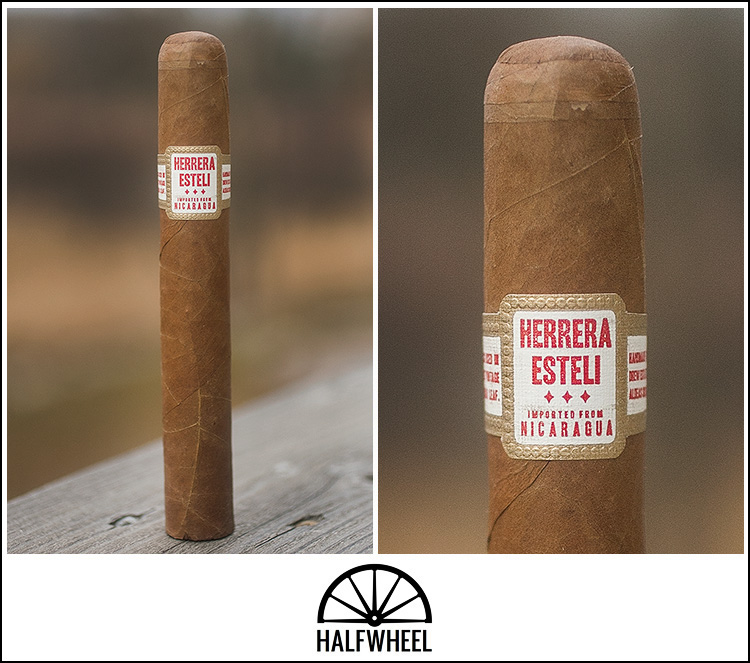
- Cigar Reviewed: Herrera Esteli Toro Especial
- Country of Origin: Nicaragua
- Factory: La Gran Fabrica Drew Estate
- Wrapper: Ecuadorian Habano
- Binder: Honduras
- Filler: Nicaragua
- Size: 6 1/4 Inches
- Ring Gauge: 54
- Vitola: Toro
- MSRP: $9.35 (Boxes of 25, $233.75)
- Date Released: Early 2013
- Number of Cigars Released: Regular Production
- Number of Cigars Smoked for Review: 11
The Herrera Esteli is large in the hand—solidly well made with a slightly toothy wrapper that is totally free of visible veins. The wrapper is an caramel brown color, immaculate in the presentation. It slightly spongy when squeezed, and the wrapper smells strongly of sweet cedar, leather and manure. Cold draw notes are barnyard, wood and slightly sweet mint.
The first third of the Herrera Esteli instantly starts out with a strong and sweet maple note, along with the perfect amount of spice on the lips and white pepper on the retrohale. Other notes of oak, leather, creamy nuts and citrus dominate the profile. The white pepper remains at a constant level throughout the first third, but the spice dies down to almost nothing. The smoke production is way above average and the construction is phenomenal so far. The strength is not overwhelming at all, but I can feel it building, and it ends the first third at just under medium.
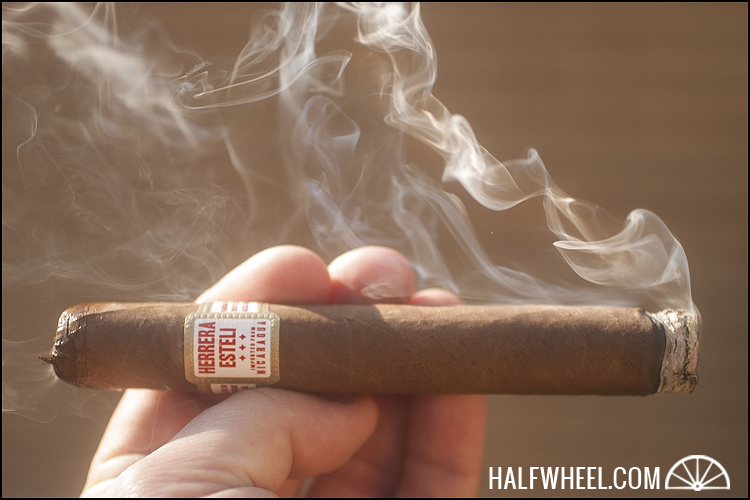
Coming into the second third of the Herrera Esteli and the sweetness that dominated the first third has morphed into more of a vanilla note, but the white pepper has actually increased a bit, although it is only noticeable on the retrohale. Other notes of peanuts, sharp citrus, light earth and oak jump in and out, always keeping me on my toes. Smoke production continues to impress, as does the burn and draw, and the strength has increased just a bit to a solid medium by the end of the second third.
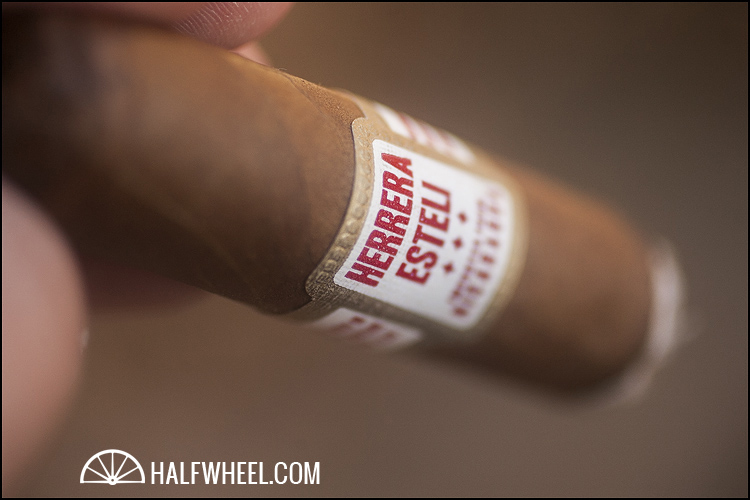
The final third of the Herrera Esteli has the sweetness morph back into more of a maple note and the creaminess in the profile increases noticeably. Other notes of coffee bean, oak, nuts and citrus dominate the profile. The pepper on the retrohale has increased again compared to the second third, although it is still at a very even level. Both the burn and draw remain wonderful until the end, and the nub stays cool to the touch, allowing me to smoke the Toro down a bit further then I normally would. The overall strength ends up right smack in the middle between medium and full.
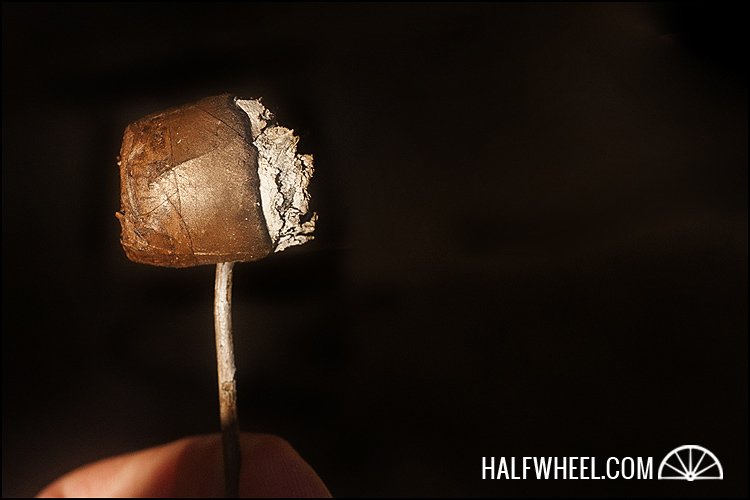
Final Notes
- Herrera Esteli is scheduled to be released next year. There were 150 boxes shipped to the U.S. for events in late 2012, including an event in Dallas at Elite Cigar Cafe.
- I smoked 11 of these cigars for this review: five Toros, two Coronas, two Lonsdales, one Robusto and one of the freshly rolled custom sizes. To me, the Toro stands out as the best size in the blend, with the Corona not far behind, and the Lonsdale and Robusto quite a bit further down the road. To me, the Corona is a bit more balanced, but the Toro is a bit more complex profile-wise, as well as just a tad more creamy.
- Herrera told me that the Toro is his favorite vitola in the line, but that he is seen smoking the Corona more because of time restraints.
- He also said that he worked on about 75 different blends to come up with a combination he loved, and that he had total control over what he used in the cigar blend.
- As you may have noticed above, there is no photo of the Pyramid Fino (6 x 52) vitola, due to the fact that they are “not ready yet”. It will ship with the rest of the line when they are shipped to retailers early next year.
- The Herrera Esteli uses the same wrapper as the CyB, and while I tasted slight similarities between the two blends, the CyB seems slightly sweeter and the Herrera Esteli has a bit more pepper on the retrohale. The Herrera Esteli is also noticeably stronger then the CyB as well.
- Like the CyB, the wrapper on these is extremely fragile. As in, blow on them and they crack fragile. Just be aware that they will not hold up to rough handling without damage. I do wonder if there are going to be problems related to shipping these sans cellophane.
- I did notice a few similarities in this blend compared to the Cuenca y Blanco, and while I love the Herrera Esteli, I think I like the CyB just a little bit more. However, hey are quite close, and I can see it going either way with certain people.
- I absolutely LOVE the presentation on this release. From the simplistic but highly memorable band, to the extremely Cubanesqe boxes and ribbons, everything meshes together very well.
- In fact, when I first saw the band on the Herrera Esteli, I immediately noticed the similarities to the Henry Clay band. However, when I asked Herrera about it, he said he was actually inspired by an old Cuban Bolivar band that is almost unknown of. In fact, it is not on the normal online sources that I could find, but it was recently seen in a sampler that Nat Sherman gave away at the 2012 IPCPR show.
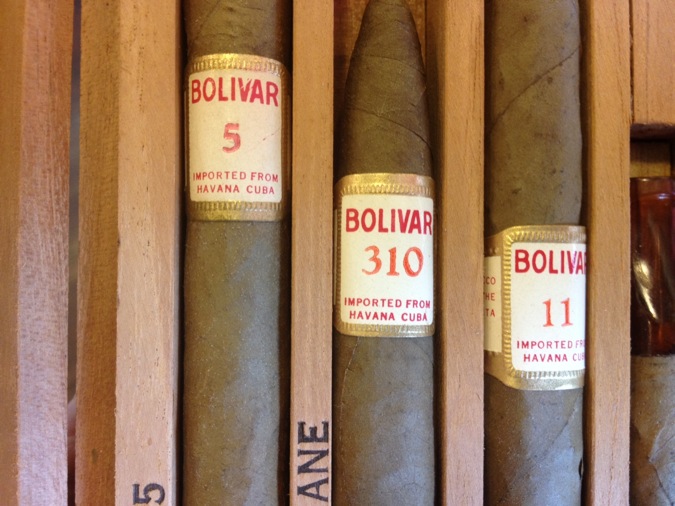
- As far as I know, out of all of the cigars Herrera has blended himself or been a part of blending, this is the first release to bear his name.
- The ash is very well formed, almost totally seamless and a very light gray. On each vitola, the ash held longer than I thought it would including almost two inches on the Toro.
- Herrera hand rolls his blend for attendees at almost every event he is at. He told me that he likes to switch things up a bit, so will sometimes roll non-production sizes, pigtails, etc just to keep things fresh. The sample he was rolling at the event where I bought my samples was about three-quarters of an inch longer than the regular production Corona vitola.
- Willy Herrera also had a part in blending another one of my favorite cigars this past year, the La Palina Goldie.
- You may or may not remember, but I photographed an Icons of Cigars™ portrait of Willy Herrera earlier in the year while in Estelí.
- If you want to purchase any of the Herrera Esteli, our sponsors should have them in stock when they are released early in 2013.
- Drew Estate is a site sponsor.
- The final smoking time for all of the Herrera Estelis averaged about one hour and 50 minutes.
The Herrera Esteli fills a much needed hole in the Drew Estate line-up: a somewhat lighter, medium to full, full flavored cigar for the Liga Privada and Undercrown fan base. While I normally gravitate towards the smaller ring gauges in any given line, after smoking almost half of a box for this review of various sizes, there is no doubt in my mind that the Toro vitola is the best out of this specific brand, albeit with the Corona not far behind. The finish is excellent, and the blend is quite Cubanesque: creamy, sweet and very balanced, with a very nice combination of white pepper, nuts and slightly sharp citrus throughout the profile. A very good cigar for just about any time of day, and an extremely impressive first release at Drew Estate for Willy Herrera.


